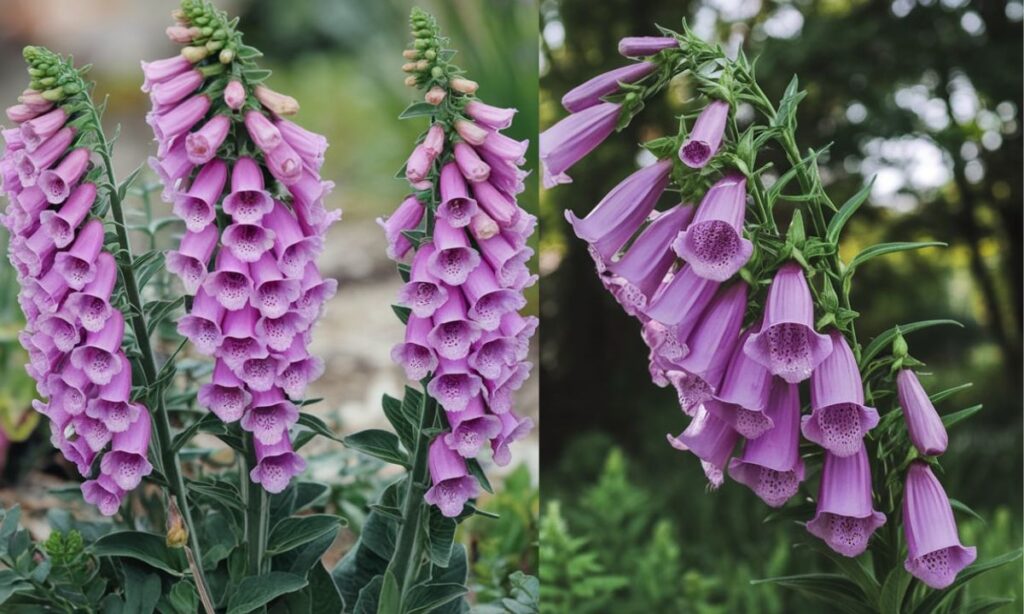The phrase “Foxglove Gumshoe” intriguingly combines two distinct ideas: the delicate, yet poisonous foxglove flower, and the hardened persona of a “gumshoe,” an old-fashioned term for a detective. This pairing evokes a blend of beauty and danger, as well as mystery and subtlety, inviting interpretations that are both poetic and gritty. The imagery suggests a detective who operates with finesse, much like the deceptive allure of the foxglove.
What is a Foxglove?
Foxglove is a striking plant with bell-shaped flowers that bloom in vibrant colors such as pink, purple, and white. Scientifically known as Digitalis purpurea, this plant is commonly found in woodlands and garden landscapes. The term “foxglove” comes from its historical association with foxes. Early English folklore suggests that the plant’s flowers resembled gloves worn by foxes, hence the name.
Botanical Significance of Foxglove

Foxglove is best known for its medicinal properties, particularly in the treatment of heart conditions. The plant contains compounds known as cardiac glycosides, which can help regulate heart rate and blood pressure. However, these compounds are also highly toxic in large doses, making the plant a double-edged sword in both medicine and folklore.
Cultural Significance of Foxglove
In folklore, the foxglove was often linked with magic and the supernatural. In some cultures, it was believed that the plant could ward off evil spirits or grant protective powers. The bell-shaped flowers also symbolize insincerity in some cultural contexts due to their deceptive beauty and toxicity.
Historical Significance
Foxglove has been used for centuries in both medicine and mysticism. Its use dates back to ancient Greek and Roman times, where it was employed for its healing properties. Throughout history, the plant was considered both a cure and a poison, representing the delicate balance between life and death.
Medicinal Use of Foxglove
The use of foxglove in medicine was first documented by the famous herbalist William Withering in the 18th century. He discovered that an infusion made from the plant could be used to treat dropsy (congestive heart failure). Since then, foxglove has been a key ingredient in cardiac medications, although modern treatments are far more controlled and refined.
Foxglove in Folklore
Foxglove has been woven into countless myths and legends over the years. In some European traditions, it was thought that fairies wore foxgloves as part of their attire, using them to craft magical gloves. The plant was also associated with good fortune, especially when grown in one’s garden, as it was believed to bring prosperity and protection.
Cultural Impact
Foxglove’s cultural impact extends beyond folklore into art, literature, and modern media. The plant’s unique appearance, as well as its medicinal properties, makes it an attractive subject for storytellers, artists, and filmmakers.
Foxglove in Art and Literature
In literature, foxglove is often used as a symbol of both beauty and danger. Its appearance in novels, poems, and plays frequently highlights themes of duality: life and death, beauty and toxicity. Writers have used the plant to deepen the mystery in botanical mysteries and detective stories, creating a vivid image of intrigue.
The Plant in Modern Media
The representation of foxglove in modern media has taken various forms. In detective fiction, it is sometimes used to symbolize the poisonous nature of a crime or the complexity of a case. Films and TV shows may feature the plant in scenes involving secretive investigations or magical realism, adding an air of mystery and intrigue to the narrative.
Understanding the Term “Gumshoe”
The term “gumshoe” is a colloquial expression that refers to a detective, often one working in the private sector or in a gritty, urban environment. Its origins can be traced to the early 20th century, where gumshoes (or rubber-soled shoes) were commonly worn by detectives to move stealthily without being heard.
Etymology and Usage

The word “gumshoe” comes from the term for rubber-soled footwear. Detectives often wore these shoes to avoid making noise while tailing suspects or conducting investigations in quiet environments. Over time, the term became synonymous with a detective, particularly one who works independently, often in the noir tradition.
Modern Interpretations of Gumshoe
In modern usage, “gumshoe” is often used to describe a private investigator or a detective with a no-nonsense approach. The term evokes images of hard-boiled detectives from film noir, working late into the night to solve complicated cases. It carries with it a sense of toughness and dedication to uncovering the truth, often at the cost of personal safety or comfort.
Combining the Terms: Foxglove Gumshoe
When you combine “foxglove” with “gumshoe,” an intriguing blend of imagery and meaning emerges. The phrase “foxglove gumshoe” evokes a detective with an affinity for the mysterious, the dangerous, and the arcane. This term could represent an investigator who specializes in solving cases involving nature, botany, or even mystical forces.
Possible Interpretations of Foxglove Gumshoe
- A detective who specializes in cases related to toxic plants, herbs, or poisons.
- A fictional sleuth who works in an environment rich in botanical mysteries or magical elements.
- A character who uses their knowledge of plants and their properties to solve crimes, particularly those involving nature-based or botanical poisons.
The Role of Foxglove Gumshoe in Literature
The combination of these two terms – foxglove and gumshoe – creates an image of a detective who works in a world that blends the ordinary with the extraordinary. Foxglove gumshoes appear in literary genres that fuse elements of mystery, fantasy, and detective fiction.
Mystery Novels
In mystery novels, the “foxglove gumshoe” archetype can play a pivotal role in stories where botanical or poison-related crimes are central. This detective may track down rare plants or uncover dark secrets hidden in garden greenhouses or botanical gardens, solving mysteries related to plant-based poisons or plant-based murders.
Fantasy Literature
In fantasy literature, the foxglove gumshoe could be a magical detective. In a world filled with enchanted flora, the detective might use their knowledge of magical plants and herbs to solve cases that involve both human and supernatural elements. The foxglove, being a symbol of danger and allure, would be an apt representation of the magical and treacherous world they navigate.
Science Fiction
In science fiction, the term could take on a futuristic twist. The gumshoe might be investigating a crime involving bioengineered plants, toxic flowers, or alien flora with mysterious powers. The connection to foxglove adds an element of mystery and science-based investigation, as detectives in the future solve crimes involving unnatural plant life.
The Importance of Language and Phrases

The phrase “foxglove gumshoe” demonstrates the evolution of language and how new expressions can combine elements of nature, crime, and character archetypes. This phrase shows how language can grow and adapt, influenced by cultural shifts and changing storytelling trends.
Language Evolution
Language is constantly evolving. New phrases, expressions, and idioms often emerge from the fusion of words and ideas. The combination of botanical terms like “foxglove” with detective jargon such as “gumshoe” creates a fresh narrative that speaks to the evolving nature of storytelling.
Creative Expression
The use of creative phrases like “foxglove gumshoe” allows writers to develop unique characters, settings, and plots. It encourages a playful exploration of language, where familiar terms are combined in new ways to spark interest and evoke a sense of wonder and mystery.
Conclusion
The phrase “foxglove gumshoe” is an example of how language can blend seemingly disparate elements into a single, captivating concept. The combination of a toxic, mystical plant with a detective archetype suggests a world of intrigue, mystery, and nature-based investigations. Whether in literature, film, or folklore, the foxglove gumshoe evokes the dual nature of life and death, beauty and danger, making it a perfect symbol for modern detective stories.
FAQ’s
1. What is a foxglove plant?
Foxglove (Digitalis purpurea) is a plant with bell-shaped flowers that are often pink, purple, or white. It is used in medicine but can be toxic if consumed improperly.
2. What does “gumshoe” mean?
“Gumshoe” is a slang term for a detective, particularly one who works in a gritty, urban environment and often uses stealth to solve cases.
3. Is the foxglove poisonous?
Yes, the foxglove plant is poisonous if ingested, as it contains compounds that can affect the heart.
4. What is the significance of foxglove in folklore?
In folklore, foxglove is often associated with magical or protective properties, believed to ward off evil spirits or grant mystical powers.
5. What would a “foxglove gumshoe” be in fiction?
A “foxglove gumshoe” could be a detective who specializes in cases involving toxic plants, botanical poisons, or magical flora in fantasy and mystery fiction.
Read more informationhttps://techyspirtz.com/
Visit my other websitehttps://verbvictories.online/

David is a seasoned SEO expert with a passion for content writing, keyword research, and web development. He combines technical expertise with creative strategies to deliver exceptional digital solutions.














